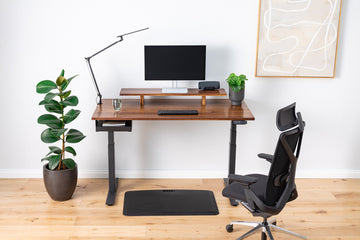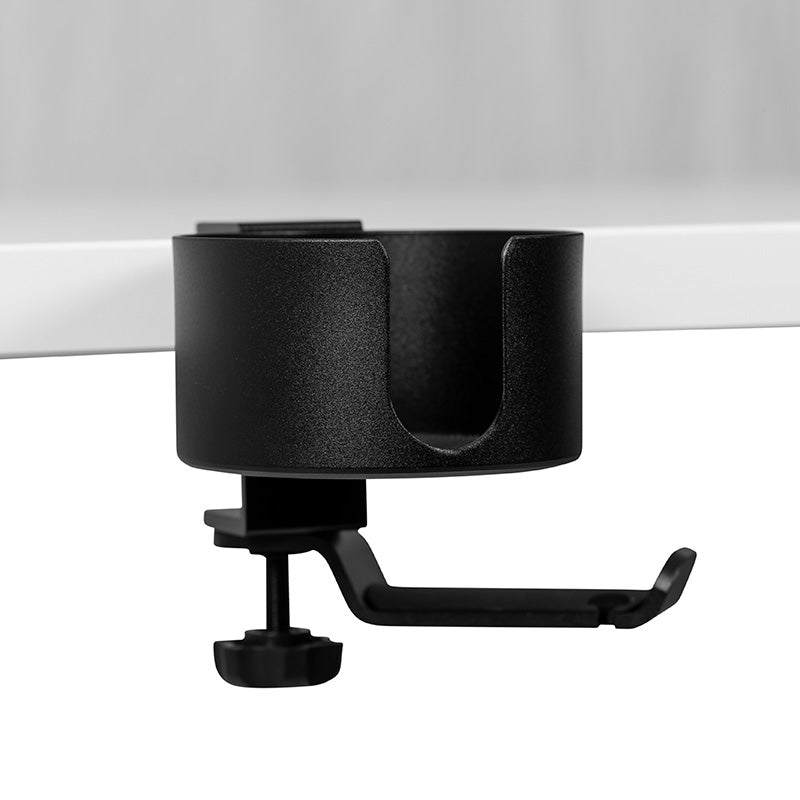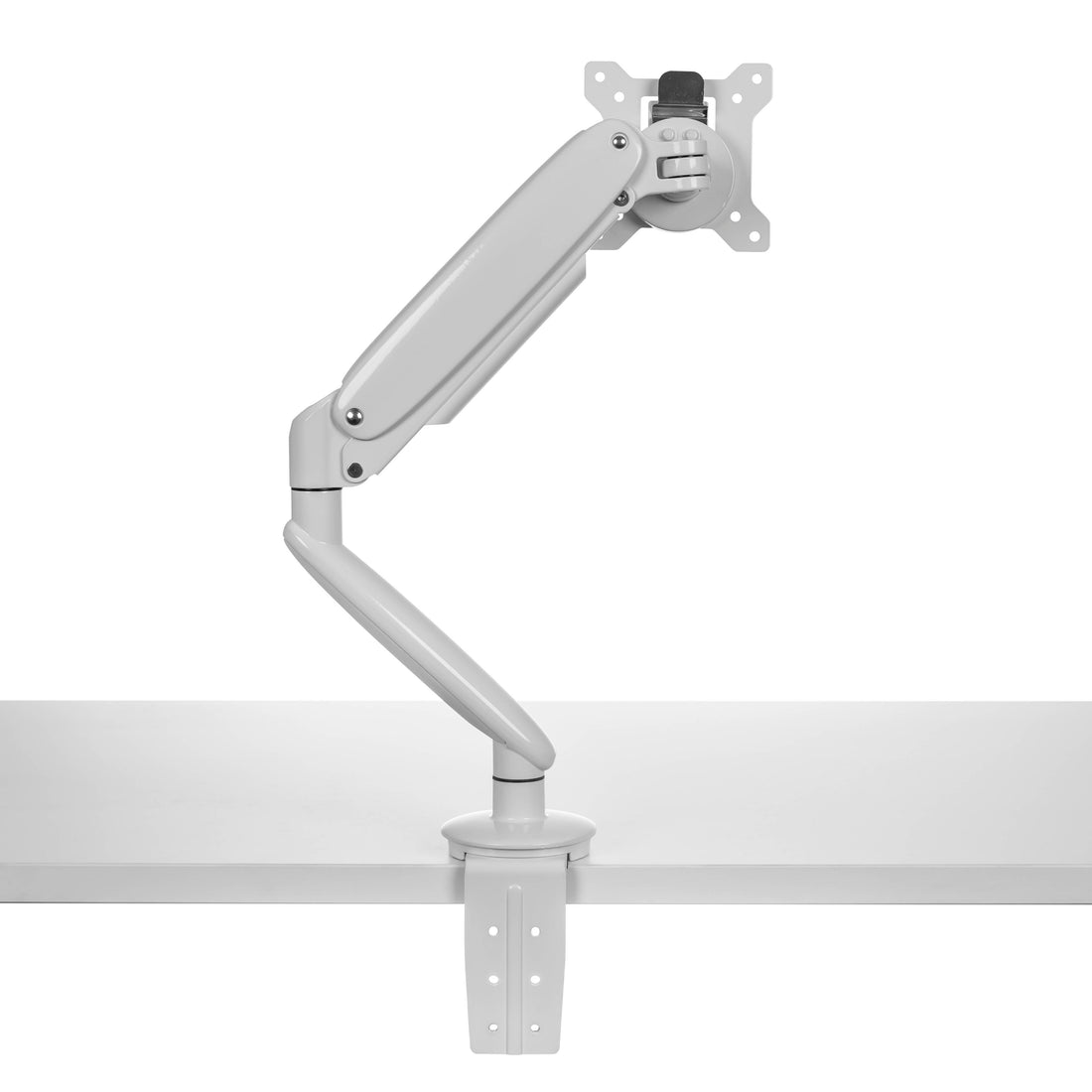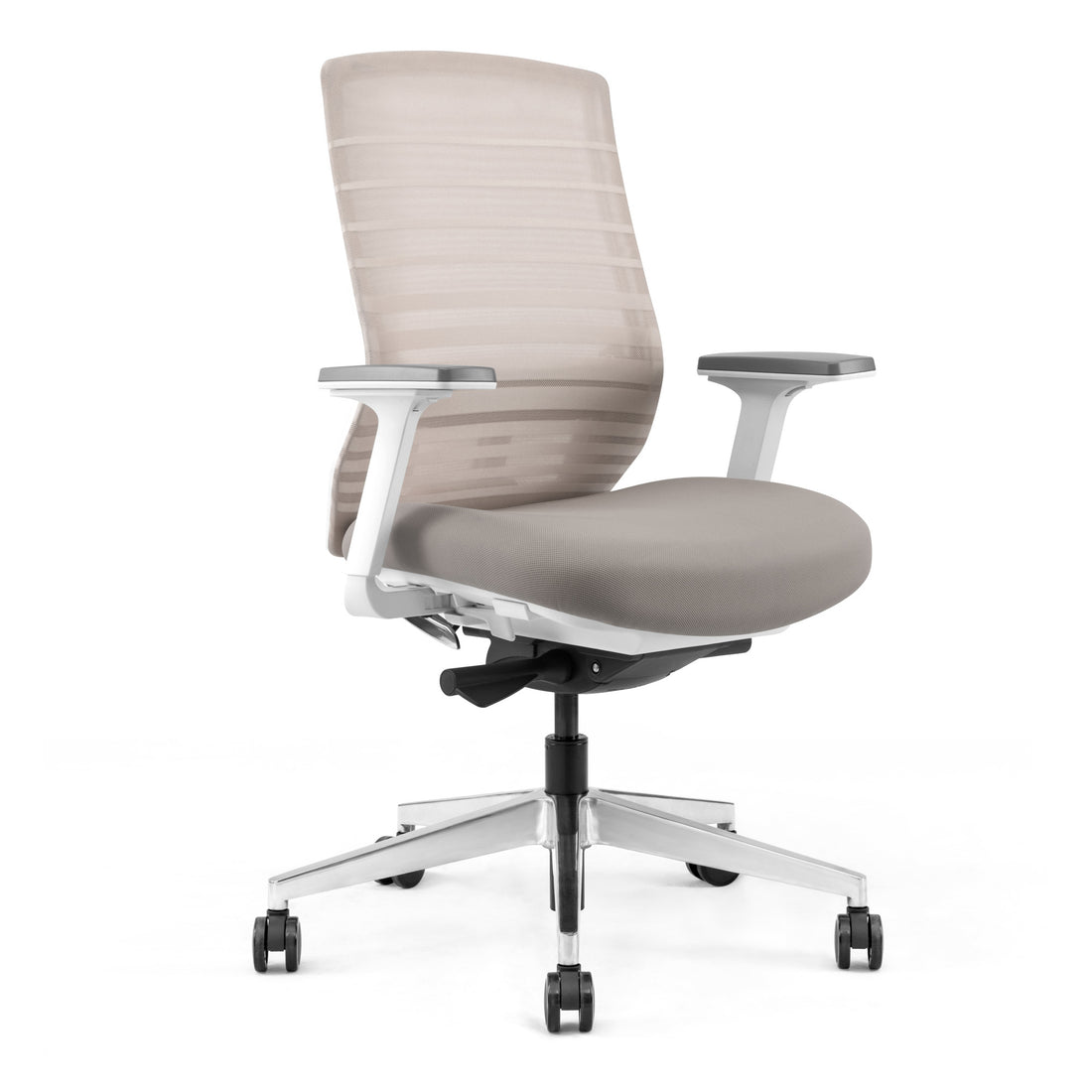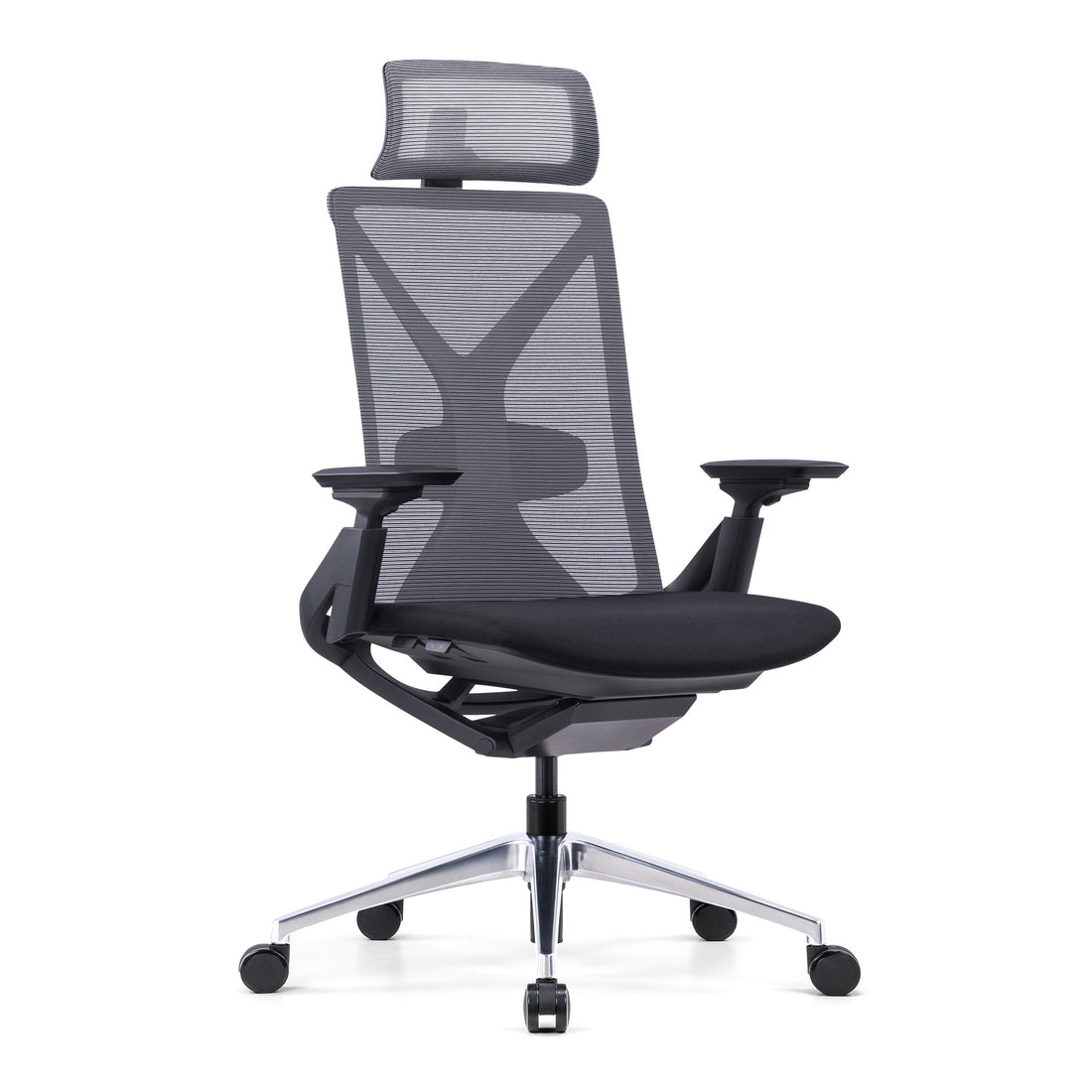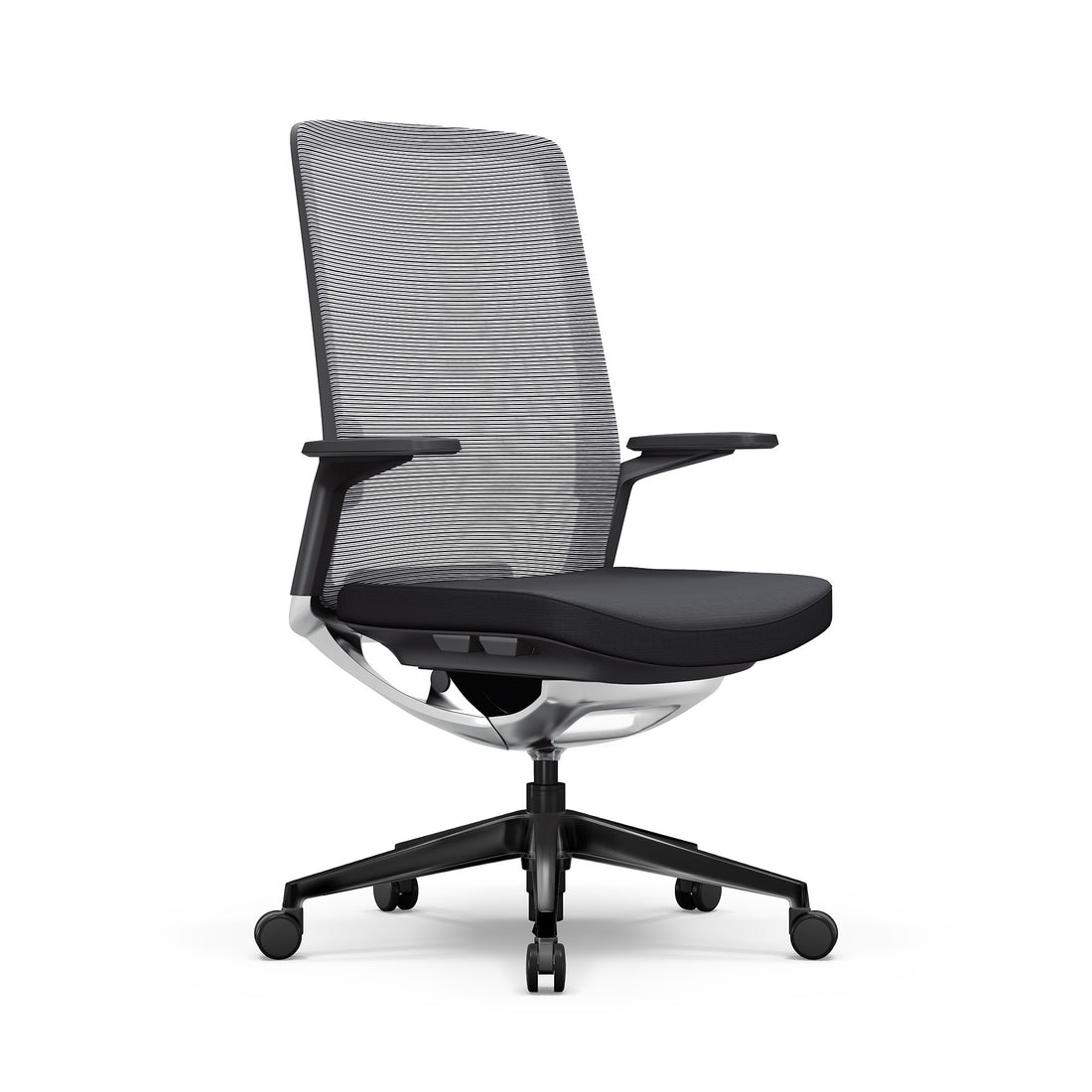If you’re looking for a way to improve your comfort and productivity during your workday, a standing desk and an ergonomic chair are great ways to do that. Comparing the two pieces of furniture can be difficult, though, because each item provides its own set of unique benefits.
Similarly, there may be certain features that only one of these items will be able to provide. Our quick guide will give you a glance at what a standing desk is, what an ergonomic chair is, the advantages of each, and how they can benefit you on a day-to-day basis.
What Is A Standing Desk?
A stand desk, also known as a stand-up desk, allows you to work while standing. Most standing desks are height adjustable and allow you to modify the desk to a height that is comfortable for you.
These height-adjustable workstations give you the ability to effortlessly change between sitting and standing while you work and come in various designs.
If you’re wondering how to lower a standing desk, they can be manually or electronically adjusted depending on their type and on your needs. Some are available as a converter that rests on top of your existing desk.
Advantages Of A Standing Desk
Using a standing desk provides several significant health benefits, and even has the potential to boost productivity.
Integrating standing desks into your workstation and everyday work setup can also mitigate the negative effects of prolonged and excessive sitting.

Reduces The Risk Of Disease
Sitting for prolonged periods leads to inactivity in your body. Inactivity can slow your metabolism and even interfere with your body's ability to break down fatty tissue, regulate blood sugar or blood glucose levels, and regulate blood pressure.
If you spend most of your workday sitting in front of a desk, you may have an increased risk of obesity and weight gain. This is because sitting impairs your ability to burn calories. By switching to a standing desk, you can burn an extra 170 calories when compared to spending time in a sedentary position.
Standing can also help control unexpected spikes in blood sugar, which is especially important for people who experience insulin resistance or have been diagnosed with type 2 diabetes. Simply alternating between sitting and standing every half an hour can help to reduce harmful blood sugar fluctuations.
Long periods of sitting have been found to increase the risk of developing heart disease.
Sedentary lifestyles are so damaging that even an hour of vigorous exercise may not be enough to compensate for the harmful consequences of a full day of sitting. So, it’s obvious that spending time on your feet is better for your heart and overall health.
A surefire way to reduce these risks is by standing while you work or changing between sitting and standing with a sit-stand desk throughout the day. This can help to break up the amount of time you spend sitting at your desk and can negate inactivity.
Reduces Back Pain
If you spend a lot of time sitting, you may find that back discomfort is a typical complaint. Constant sitting doesn’t provide adequate back support and can quickly lead to fatigue and drooping of the shoulders.
Both of these conditions contribute to poor posture, which leads to muscle soreness and can even result in spinal issues if left untreated.
Improves Overall Wellbeing
Standing desks tend to have a beneficial effect on overall health. Using a standing workstation can reduce overall stress levels and even improve your energy levels, resulting in less frequent feelings of exhaustion or burnout.
Increased energy levels aren’t only great for your productivity, either. Better energy levels can cause better moods. Standing desks are a great way to feel energized and therefore more enthusiastic throughout your workday.
What Is An Ergonomic Chair?
Ergonomic chairs are meant to adapt to the needs of the user and are linked to increased productivity. This is due to the personalized support they provide.
A chair may be considered ergonomic if its seat height, depth, and lumbar support can all be adjusted to improve your comfort.
This means you should be able to adjust the chair's height so that your legs are parallel to the floor, and you should be able to adjust the seat depth so that you can sit comfortably.
Good lumbar support should provide adequate support for the lower back, allowing your spine to rest in an ideal position for excellent posture.
Advantages Of An Ergonomic Chair
Improved Posture
Traditional office or desk chairs are one of the main causes of back pain when sitting for long periods. Because of their poor lumbar support and standard design, they can cause slumped shoulders and back pain because of how the spine curves in the chair.
Ergonomic chairs have the benefit of adjustability, as well as increased comfort. By adjusting your chair to its optimum ergonomic settings, you can improve your posture when sitting at your desk. Improving your posture can dramatically reduce the aches and pains associated with poor posture.

Increased Levels Of Comfort
Using an ergonomic chair as part of your workspace setup can keep you comfortable - no matter how long your workday is. By adjusting the chair to suit your body, you can keep your back and shoulders in a more relaxed position and reduce muscle tension.
You can also adjust your chair at any time. If you begin to feel uncomfortable or find yourself starting to slump, you can fix it in a matter of seconds just by adjusting your chair.
Reduced Back Pain
The major advantage of ergonomic chairs is that they can almost entirely eliminate both back pain and hip pressure. The backrests of the chair naturally support the curvature of your spine and are generally taller than traditional chairs to protect your entire back.
The cushioned seats are specifically designed to relieve pressure on your hips and lower lumbar as well.
Comparing A Standing Desk And Ergonomic Chair
Both a standing desk and ergonomic chair can be beneficial to your overall wellbeing and health when you’re working. But which one should you choose? The answer is dependent on your individual needs, but there are several benefits to incorporating both items into your workspace setup.
Each item has its own unique benefits, but it can also have some drawbacks. One factor to consider is that electronic desks need a constant power supply. Without it, your standing desk will not be able to be adjusted.
While ergonomic chairs provide comfort, improve posture, and reduce back pain, there are still downsides to using a chair on its own.
Instead, utilizing a standing desk can help you to break up the amount of time you spend sitting. Spending your workday on your feet can cause pain in your feet and bodily fatigue, so combining a sit-stand desk with an ergonomic chair can help you to make sure your working conditions are optimized from start to finish.
Final Thoughts
Comparing a standing desk and an ergonomic chair is like comparing apples and oranges. Instead of being interchangeable, they each provide their own advantages.
If you want the ergonomic dream, there’s nothing better than optimizing your office with both a standing desk and an ergonomic chair. Not only will you find that your productivity levels increase, but you’ll also be making the smarter choice for your overall health and wellbeing.
Did you find our blog helpful? Then consider checking:


